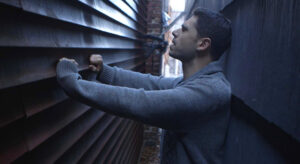The caveat was simple and singular: Do it.
When I was several months into my fifth year of existence, my father came home from work shortly after a rugged VHS copy of Burton’s Batman had just concluded playing for the 316th time on our television.
I had riddled the tape’s cover with gold-star stickers and had frayed the cardboard edges with overuse.
After telling me about his day, and I recalling mine, I turned to the television and saw that the credits were still rolling.
So I fatefully inquired, “Who are all of these people?” (I probably mumbled an incoherent version of that line and didn’t say it precisely as written, but you get the point.)
So he proceeded to give me a little-boy-crash-course on what goes into making a motion picture.
As nauseating and self-serving as that anecdote is, it’s true, and from then on I had the genuine, heartfelt answer to the question many never are lucky enough to figure out over the course of their lives: what do you want to be when you grow up?
So imagine my dismay when I was on the tricky precipice of turning 30 and I’d yet to make a feature film.
It certainly wasn’t for a lack of effort; 2014 saw me ably (and nearly) get several major projects off the ground, but alas, it wasn’t to be.
So, sometime in early 2015, as the seeds of Strawberry Flavored Plastic were gestating in my brain, I said to myself, “Do it.”
As simple as that.
And, rather luckily, the idea I had wasn’t necessarily costly.
As work commenced on the feature script that would become Strawberry Flavored Plastic, I called up the wonderful group of close friends/collaborators that I knew I’d want involved and declared: “I am going to make this film in January of 2016. Cool?”
And, essentially, everyone just said, “I’m there.”
One of the most invaluable lessons I learned in the great Art Jones’ class “Producing the Film” at Hunter College (the greatest college course ever taught, by the way; one could learn four years of film school in that one three-hour-a-week class) was community building.
I found myself in my hometown of Peekskill, NY, and made a decision.
Not only will I film here, but I will make it a community project.
I will get everyone involved, everyone excited, and get this movie made.
And that’s precisely what we did.
After meeting the Mayor and City Council and getting their approval, and posting casting notices all over town, and the natural spread of word of mouth, everyone knew a feature film was going to be shot here, by a native Peekskillian.
Because of that, I was able to make this film for a very limited budget ($13,800).
Recommended: 5 Filmmaking Tips For Beginners From Director Lokesh Kumar
Principals and keys worked for next to nothing; our relatively large cast worked for nothing.
We paid no money for any locations of the many residences and businesses that we shot in, and utilized minimal equipment.
We got bargain deals on catering, our rental van, and lodging.
It was all based around community; around friendships, around encouragement, and around basic handshake deals.
I worked six days a week at my day job from the first day of pre-production until, seven months later, two days before production was to begin.
I flew in Yoni Shrira, my cinematographer, and Aidan Bristow, the film’s star, in the final five days prior to production commencing.
All meetings and rehearsals were done over many hours of coordination via the telephone.
All casting and location scouting was done on my one day off, bringing in hundreds of people from our local area of Peekskill and many from New York as well.
We got it done!
Once the script was finished, I had begun working on it with Aidan, Nicholas, Andres, Jalen, Yoni, Marta and the rest of the cast and crew.
I did a production board that quickly morphed into a finalized shooting schedule.
Once that was done, a budget quickly followed.
We filmed from late January 2016 to late February, enduring warm days and ice storms.
We had a beat-up, maroon cargo van as our one production vehicle (Bronson II.)
The majority of our keys stayed in one house, in one room, together for the whole shoot.
None of this is to brag; but the point is simple: don’t wait.
Don’t wait for approval.
Don’t wait for someone to tell you you’re ready.
When you’re ready, you know it.
And this was our time.
By Colin Bemis | Director: Strawberry Flavored Plastic
Are you a filmmaker? Are you looking for an audience to get the word out about your next film? Visit this section to understand how Flickside can be part of your journey and submit your story at [email protected].
Recommended: Films That Inspired Filmmakers – Part 1, Part 2
Follow @flicksidem and our Facebook channel for more updates!

